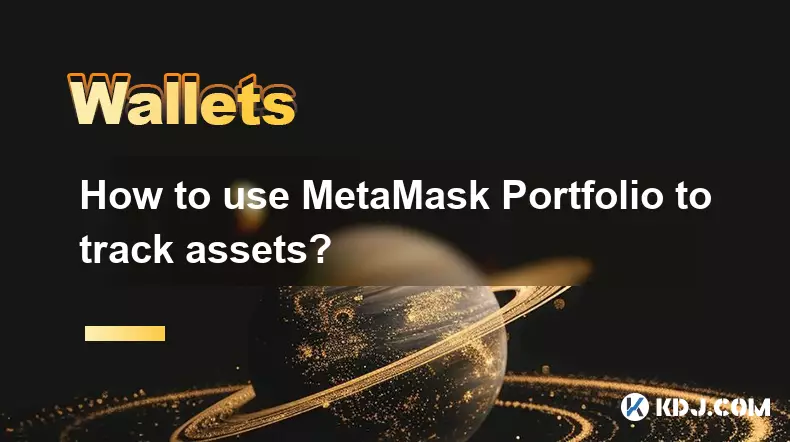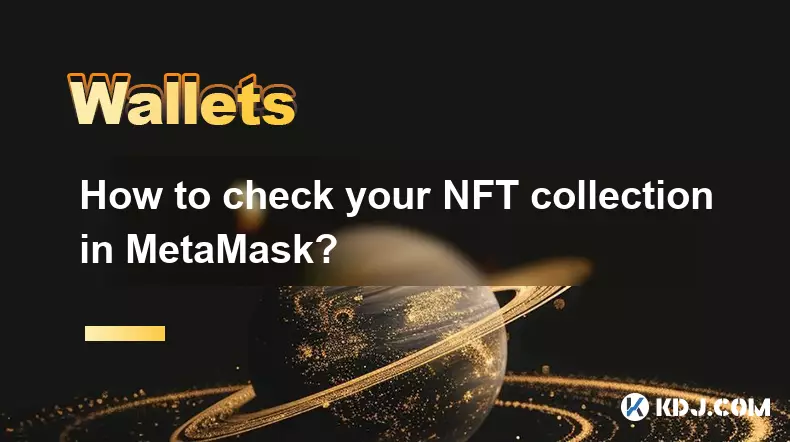-
 bitcoin
bitcoin $102182.982207 USD
-0.92% -
 ethereum
ethereum $3438.744518 USD
0.12% -
 tether
tether $0.999933 USD
0.02% -
 xrp
xrp $2.405093 USD
0.05% -
 bnb
bnb $956.306114 USD
-0.53% -
 solana
solana $153.028851 USD
-1.23% -
 usd-coin
usd-coin $0.999800 USD
-0.03% -
 tron
tron $0.294898 USD
-1.08% -
 dogecoin
dogecoin $0.171428 USD
-0.58% -
 cardano
cardano $0.551186 USD
-1.15% -
 hyperliquid
hyperliquid $38.755878 USD
0.04% -
 chainlink
chainlink $15.298460 USD
-0.05% -
 bitcoin-cash
bitcoin-cash $516.067428 USD
1.68% -
 stellar
stellar $0.280726 USD
-0.42% -
 zcash
zcash $518.919369 USD
18.01%
Why does MetaMask say "Transaction failed"?
A "Transaction failed" error in MetaMask doesn't mean lost funds—common causes include low gas, contract reverts, or slippage, and gas fees are only lost, not the principal amount.
Nov 12, 2025 at 02:40 pm

Understanding Transaction Failures in MetaMask
MetaMask is one of the most widely used cryptocurrency wallets, particularly within decentralized applications (dApps) on Ethereum and EVM-compatible blockchains. When users encounter a 'Transaction failed' message, it often causes confusion and concern. This error does not necessarily mean funds have been lost, but rather that the transaction did not execute as intended on the blockchain.
Common Causes of Transaction Failure
1. Insufficient gas fees.Every operation on the Ethereum network requires gas, which compensates miners or validators for computational resources. If the gas limit set is too low, the transaction runs out of fuel before completion, resulting in failure. Users sometimes manually lower gas to save costs, not realizing their transaction may become invalid.
2. Smart contract execution reverted.This occurs when a transaction triggers a condition in a smart contract that forces it to roll back. For example, attempting to swap a token that has transfer restrictions or providing incorrect parameters to a DeFi protocol will cause the contract to reject the call. The blockchain processes the transaction but marks it as failed due to internal logic violations.
3. Slippage tolerance exceeded.In decentralized exchanges like Uniswap, slippage refers to the difference between expected price and actual execution price. If market volatility shifts asset prices beyond the user-defined slippage threshold, the trade automatically cancels. MetaMask displays this as a failed transaction even though it was intentionally blocked by the dApp’s safeguards.
4. Network congestion or outdated nonce.During peak usage, transactions with low gas may remain pending indefinitely and eventually get dropped by nodes. Alternatively, if multiple transactions are sent rapidly, a duplicated or out-of-sequence nonce can invalidate subsequent attempts. MetaMask might still show these as failed after they are rejected by the network.
5. Token approval issues.Before using certain tokens in dApps, users must approve spending limits via an allowance transaction. If this step is skipped or interrupted, any follow-up action—such as swapping or staking—will fail. Even with correct settings, revoked or expired allowances can produce unexpected errors.
User Actions That Trigger Failures
1. Interacting with unreliable dApps.Not all decentralized platforms are audited or secure. Some contain bugs or malicious code that leads to unintended reverts. Users who connect MetaMask to untrusted sites risk failed transactions due to poorly written backend logic.
2. Incorrect input of recipient address or amount.Entering an invalid wallet address or attempting to send more tokens than available balance results in immediate rejection. While basic checks exist in MetaMask, complex scenarios involving wrapped tokens or staked assets may bypass front-end validation.
3. Using unsupported networks or tokens.Attempting to interact with a token not native to the connected chain—like sending an Arbitrum-only token from Ethereum—leads to failure. Similarly, selecting the wrong RPC endpoint can cause mismatched state information, leading to invalid transaction construction.
4. Wallet connection conflicts.If MetaMask is simultaneously connected to multiple tabs or dApps, session data may become inconsistent. Switching accounts without refreshing the interface can result in signature mismatches or incorrect payload submission, both triggering failures.
How to Diagnose and Resolve Failed Transactions
1. Check the transaction hash on a blockchain explorer.Copy the TXID from MetaMask and paste it into Etherscan or equivalent explorers. Look for status indicators: “Failed” confirms execution revert, while “Dropped” suggests network rejection. The logs often include error messages like “reverted with reason string,” which clarify the root cause.
2. Review gas settings before resubmitting.Open the failed transaction details in MetaMask and assess whether gas price was competitive at the time. Increase GWEI slightly and ensure the gas limit reflects the operation's complexity, especially for contract interactions.
3. Verify smart contract conditions.Consult the documentation of the dApp involved. Confirm required approvals, minimum balances, and parameter formats. Re-attempt only after ensuring all preconditions are met, including resetting allowances if necessary.
4. Clear browser cache and reconnect wallet.Frontend glitches can misrepresent backend states. Disconnect MetaMask from the dApp, refresh the page, and re-establish the connection. This ensures accurate balance display and correct transaction drafting.
Frequently Asked Questions
Can I recover funds from a failed transaction?Yes, the principal amount is never deducted when a transaction fails. However, the gas fee paid to attempt execution is non-refundable because computational resources were consumed by the network.
Why do some failed transactions appear as “Confirmed” on Etherscan?A transaction can be confirmed—meaning included in a block—yet still fail due to contract-level reversion. The network processed it, but the intended effect did not occur. Always check the “Status” field on the explorer.
Does MetaMask warn me before a transaction fails?MetaMask performs limited real-time validation. It alerts for obvious issues like insufficient ETH for gas, but cannot predict contract reverts or slippage problems. The final outcome depends on on-chain execution.
What should I do if my transaction remains pending forever?If a transaction stalls, use MetaMask’s “Speed Up” function to replace it with a higher gas version, or “Cancel” it by submitting a zero-value transaction with the same nonce. Once replaced, the original will disappear from the mempool.
Disclaimer:info@kdj.com
The information provided is not trading advice. kdj.com does not assume any responsibility for any investments made based on the information provided in this article. Cryptocurrencies are highly volatile and it is highly recommended that you invest with caution after thorough research!
If you believe that the content used on this website infringes your copyright, please contact us immediately (info@kdj.com) and we will delete it promptly.
- Penny Production Halted: A Historic Move for US Currency
- 2025-11-13 12:45:01
- Upgrade Your Kitchen & Win a Trip to Türkiye with a New Hood & Water Purifier!
- 2025-11-13 13:00:02
- Ripple, XRP, Warning: Navigating the Deepfake Crypto Scam Landscape
- 2025-11-13 08:50:01
- The US Mint, Pennies, and Circulation: End of an Era?
- 2025-11-13 08:45:01
- Penny's End: Production Ceases in Cost-Saving Move
- 2025-11-13 13:00:02
- Penny's End: Production Halt Sparks Cost-Saving Debate
- 2025-11-13 10:40:01
Related knowledge

Why is MetaMask asking for a signature?
Nov 10,2025 at 06:19pm
Understanding Signature Requests in MetaMaskMetaMask frequently prompts users to sign messages or transactions as part of its standard operation. Thes...

How to use MetaMask Portfolio to track assets?
Nov 08,2025 at 05:40am
Getting Started with MetaMask Portfolio1. Download and install the MetaMask mobile app from the App Store or Google Play. Open the app and select 'Imp...

MetaMask not popping up: how to fix this issue?
Nov 10,2025 at 05:59am
Understanding the MetaMask Pop-Up Issue1. MetaMask is one of the most widely used cryptocurrency wallets, especially for interacting with decentralize...

How to send ETH from Binance to MetaMask?
Nov 10,2025 at 04:40am
Sending ETH from Binance to MetaMask: A Step-by-Step GuideTransferring Ethereum (ETH) from your Binance account to your MetaMask wallet is a common op...

How to check your NFT collection in MetaMask?
Nov 06,2025 at 08:20pm
Accessing Your NFTs in MetaMask Wallet1. Open the MetaMask browser extension or mobile app and ensure you are logged into your wallet account. Once in...

Why is the MetaMask swap feature failing?
Nov 06,2025 at 09:20pm
Understanding MetaMask Swap FailuresMetaMask, one of the most widely used cryptocurrency wallets, enables users to swap tokens directly within the int...

Why is MetaMask asking for a signature?
Nov 10,2025 at 06:19pm
Understanding Signature Requests in MetaMaskMetaMask frequently prompts users to sign messages or transactions as part of its standard operation. Thes...

How to use MetaMask Portfolio to track assets?
Nov 08,2025 at 05:40am
Getting Started with MetaMask Portfolio1. Download and install the MetaMask mobile app from the App Store or Google Play. Open the app and select 'Imp...

MetaMask not popping up: how to fix this issue?
Nov 10,2025 at 05:59am
Understanding the MetaMask Pop-Up Issue1. MetaMask is one of the most widely used cryptocurrency wallets, especially for interacting with decentralize...

How to send ETH from Binance to MetaMask?
Nov 10,2025 at 04:40am
Sending ETH from Binance to MetaMask: A Step-by-Step GuideTransferring Ethereum (ETH) from your Binance account to your MetaMask wallet is a common op...

How to check your NFT collection in MetaMask?
Nov 06,2025 at 08:20pm
Accessing Your NFTs in MetaMask Wallet1. Open the MetaMask browser extension or mobile app and ensure you are logged into your wallet account. Once in...

Why is the MetaMask swap feature failing?
Nov 06,2025 at 09:20pm
Understanding MetaMask Swap FailuresMetaMask, one of the most widely used cryptocurrency wallets, enables users to swap tokens directly within the int...
See all articles










































































